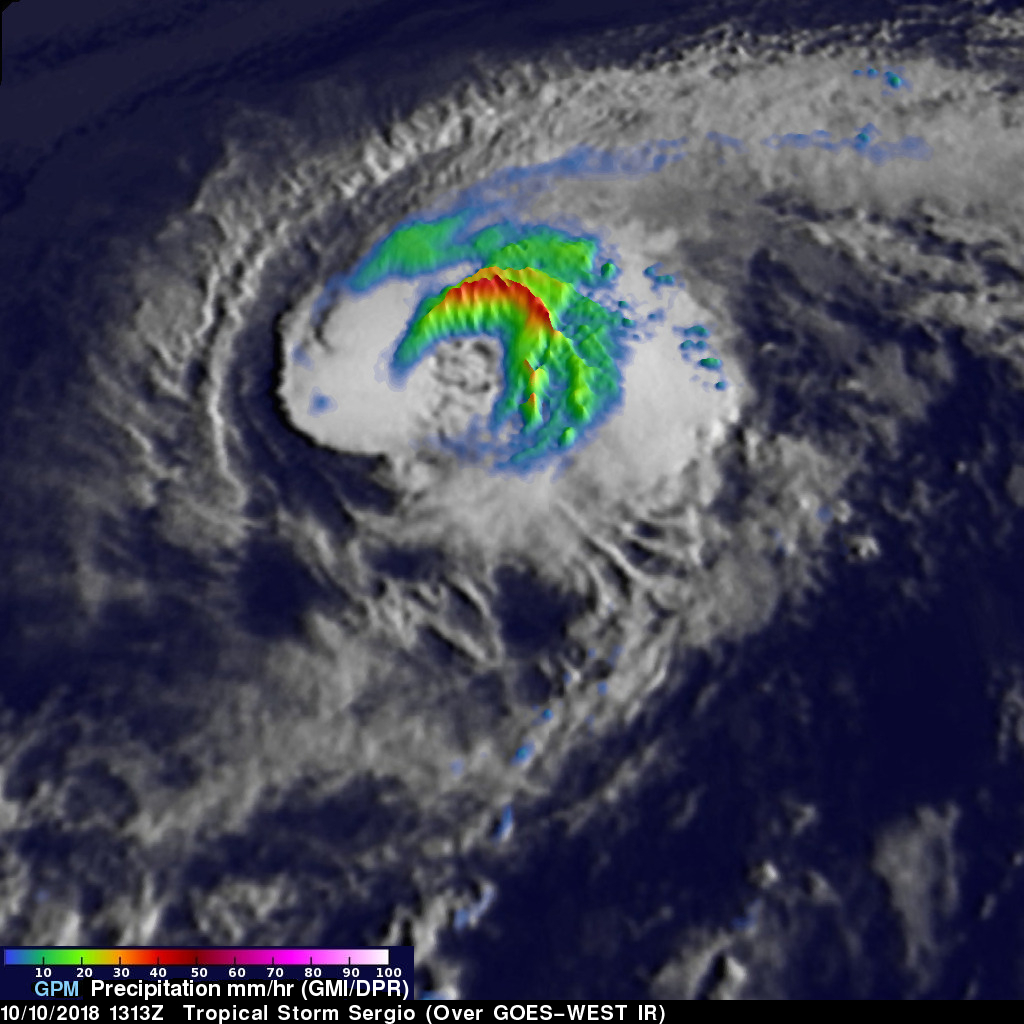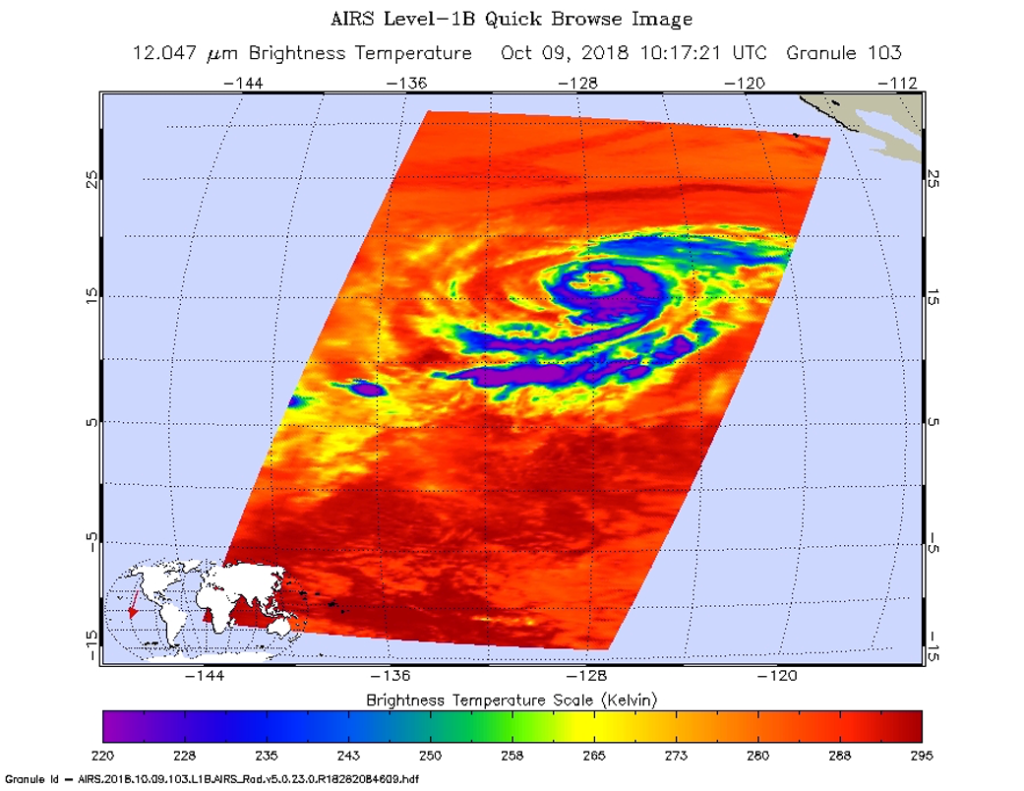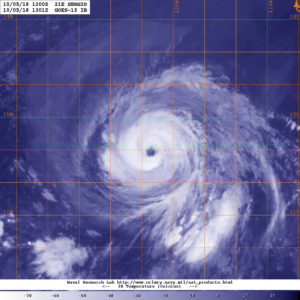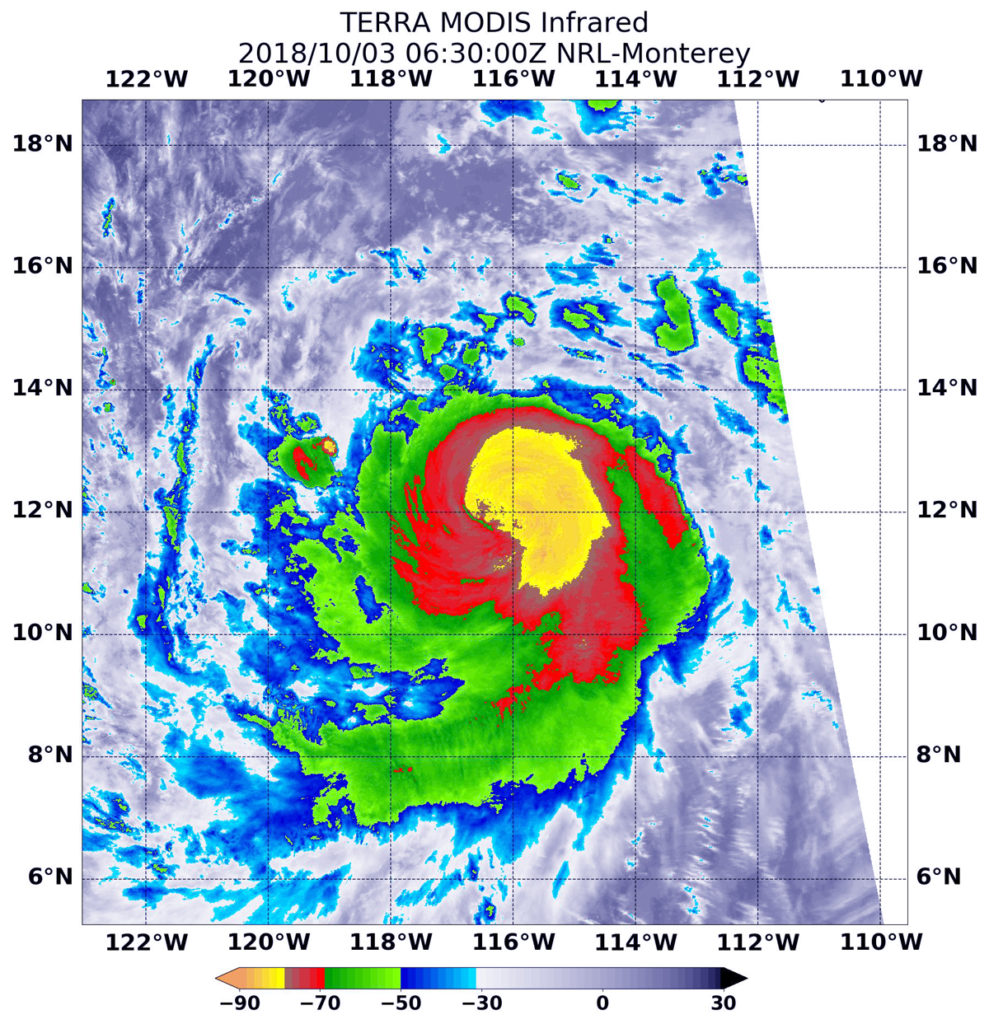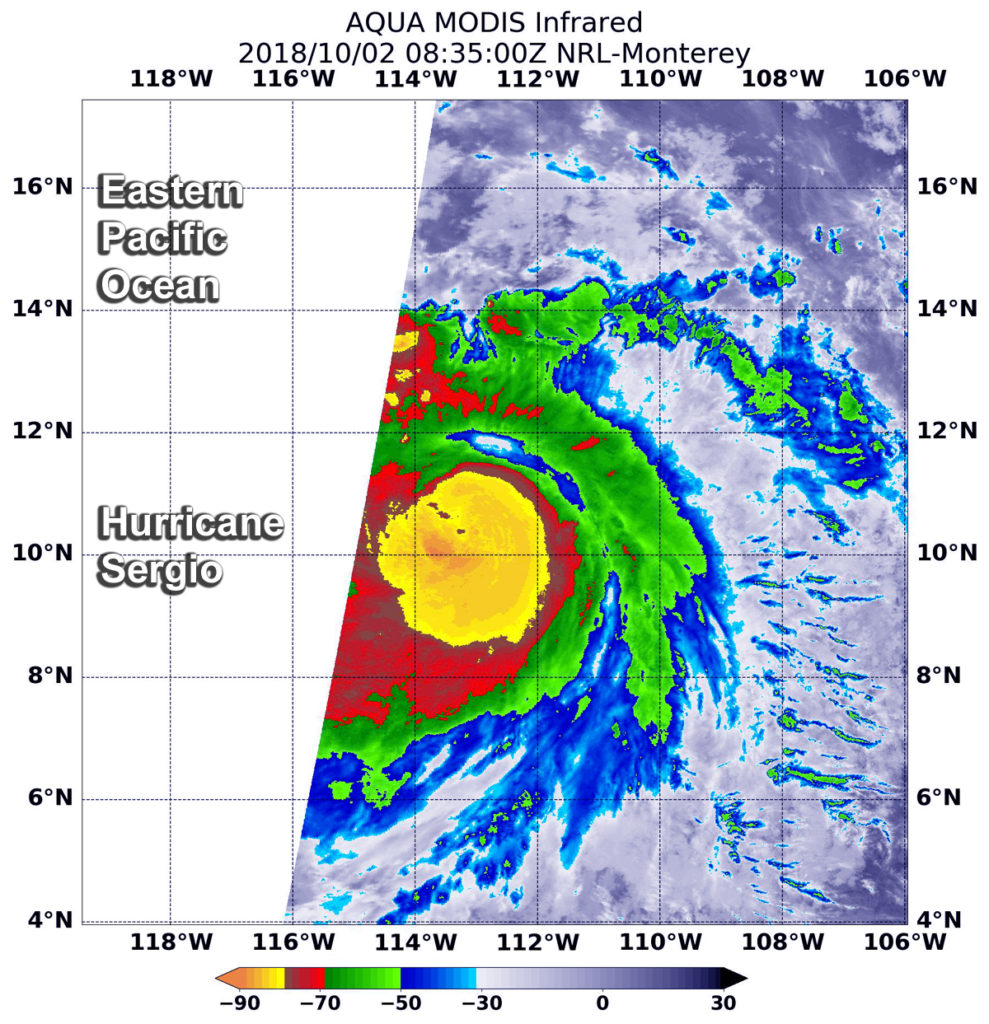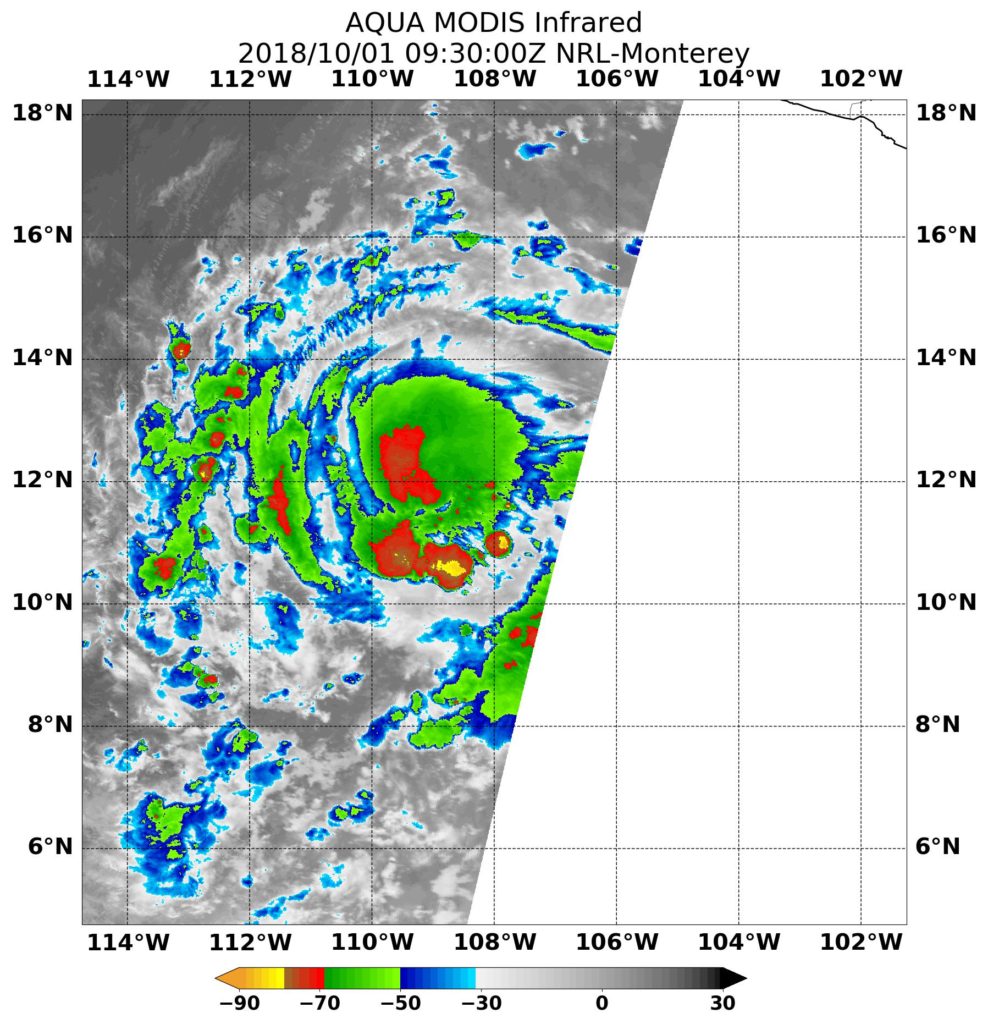Oct. 12, 2018 – NASA Sees Sergio’s Rains Sweep into the U.S. Southwest
NASA’s Aqua satellite captured an infrared image of Tropical Storm Sergio’s clouds and rainfall sweeping into the southwestern U.S.
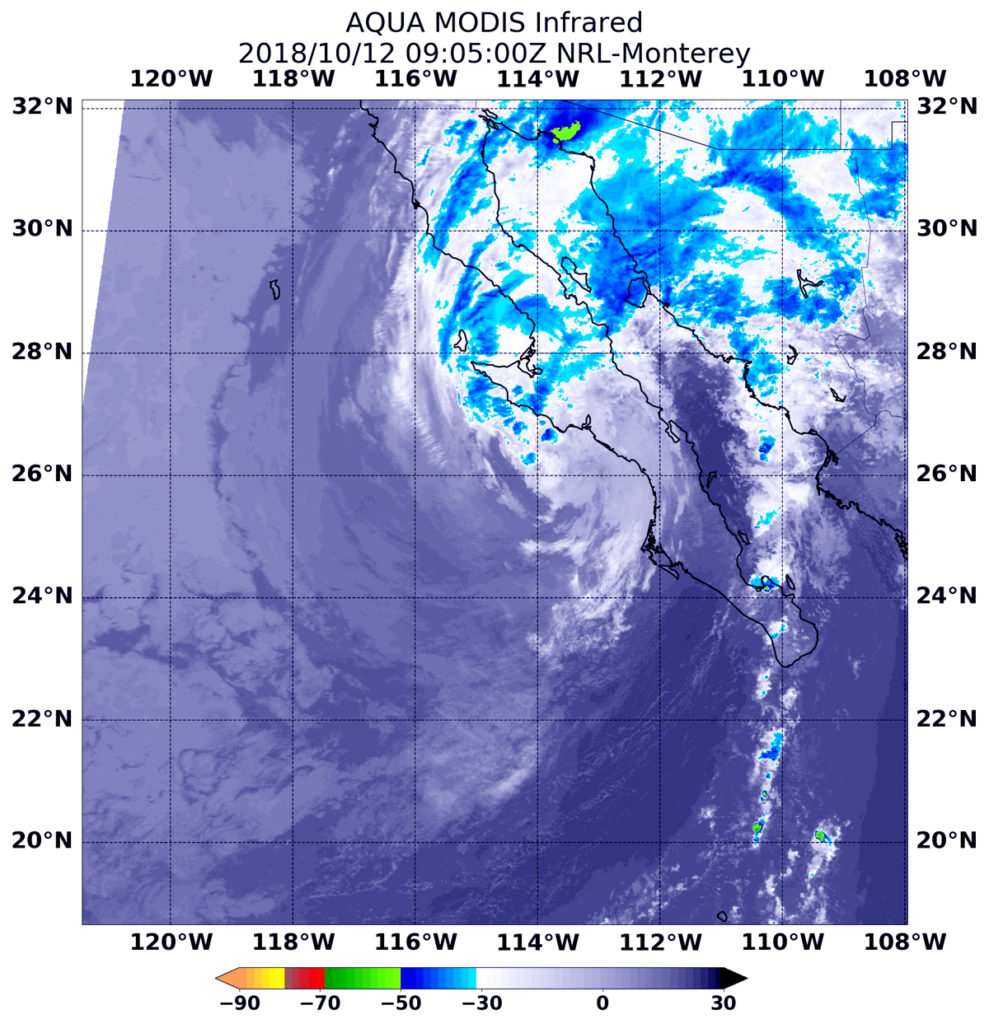
At 5:05 a.m. EDT (0905 UTC) on Oct. 3 the MODIS instrument that flies aboard NASA’s Aqua satellite gathered infrared data on Sergio. Although the center of circulation was over Baja California, Mexico, clouds and showers in the northeastern quadrant extended into southern Arizona.
Infrared data provides temperature information. MODIS found strongest storms with coldest cloud top temperatures as cold as minus 63 degrees Fahrenheit (minus 53 Celsius) in a small area in northwestern Mexico. NASA research has shown that cloud tops with temperatures that cold were high in the troposphere and have the ability to generate heavy rain. A large area of storms with cloud top temperatures near minus 50 degrees Fahrenheit blanketed most of Baja California, northwestern mainland Mexico and stretched into southern Arizona.
Soon after Aqua passed overhead, Sergio entered the Sea of Cortez, located between Baja California and mainland Mexico.
At 11 a.m. EDT on Oct. 12, a Tropical Storm Warning is in effect for the west coast of the Baja California peninsula from Punta Eugenia to Cabo San Lazaro and for the east coast of the Baja California peninsula from Mulege to Bahia San Juan Bautista.
The National Hurricane Center or NHC noted the center of Tropical Storm Sergio was located near latitude 27.5 North, longitude 111.9 West. Sergio is moving toward the northeast near 24 mph (39 kph), and this general motion is expected to continue during the next day or so. On the forecast track, the center of Sergio will move across the Sea of Cortez during the next several hours and then move over northwestern Mexico later today or tonight. Maximum sustained winds are near 40 mph (65 kph) with higher gusts.
Sergio should weaken to a tropical depression later today, and degenerate into a remnant low while moving over northwestern Mexico. Dissipation should occur on Saturday.
Despite dissipation as a tropical cyclone, though, the NHC said “moisture from Sergio will affect the United States, with total rain accumulations of 1 to 3 inches from southeast Arizona and southern New Mexico toward the southern Plains through Saturday. This rainfall could cause life-threatening flash flooding.”
For updated forecasts, visit: www.nhc.noaa.gov
By Rob Gutro
NASA’s Goddard Space Flight Center


